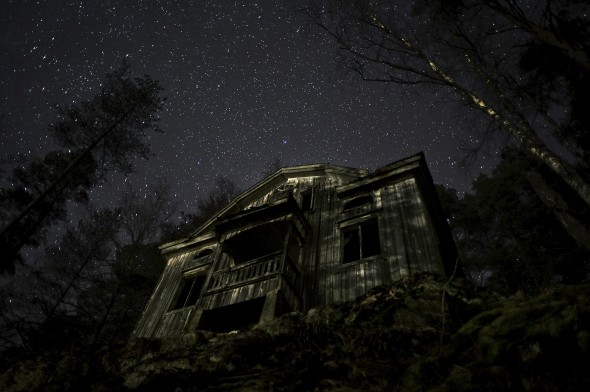Search results for "2010/02/2011/04/matti-suurpaa-parnasso-1951–2011-parnasso-1951–2011"
Markku Kuisma: Sodasta syntynyt [Born of war]
8 April 2011 | Mini reviews, Reviews
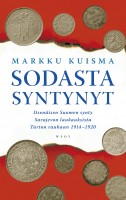 Sodasta syntynyt. Itsenäisen Suomen synty Sarajevon laukauksista Tarton rauhaan 1914–1920
Sodasta syntynyt. Itsenäisen Suomen synty Sarajevon laukauksista Tarton rauhaan 1914–1920
[Born of war. The birth of independent Finland, from the shots fired in Sarajevo to the Treaty of Tartu, 1914–1920]
Helsinki: WSOY, 2010. 273 p.
ISBN 978-951-0-36340-9
€ 35, hardback
Professor Markku Kuisma investigates the route to Finland’s independence in the years from the outbreak of the First World War to the Treaty of Tartu in 1920. He disproves some commonly held beliefs about that era, which he maintains were adopted for reasons of political expediency – such as the idea that Finnish independence was the result of focused struggles by patriots. Kuisma claims that Finland in 1917–1918 was adrift, and the actions of the industrial barons around the time of the First World War had a greater impact on Finland’s status in the world than did the unfocused policies of the Finnish Senate. That was when the corporate structures that would shape Finland’s long-term future arose and trade agreements were set up. Bankers and business leaders were in the Senate as well, and the Finnish representatives who negotiated the Treaty of Tartu were chosen from the top ranks of Finnish commerce.
Translated by Ruth Urbom
Finland goes German
17 July 2009 | In the news
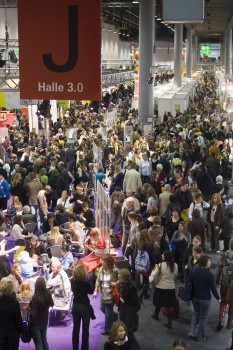
World of books: hustle and bustle at the Frankfurt Book Fair, 2008 - Photo: Fernando Baptista
Competition is hard in the book world, both nationally and internationally, so it’s big news that five years from now Finland will be the theme country at Frankfurt Book Fair, the world’s biggest encounter of those who work in the book publishing business.
Tuomas Kyrö: Mielensäpahoittaja ja ruskeakastike [Taking offence: brown sauce]
25 April 2012 | Mini reviews, Reviews
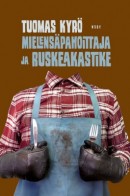 Mielensäpahoittaja ja ruskeakastike
Mielensäpahoittaja ja ruskeakastike
[Taking offence: brown sauce]
Helsinki: WSOY, 2012. 130 p., ill.
ISBN 978-951-0-39079-5
€23.90, hardback
The most popular book by Tuomas Kyrö (born 1974), so far, has been his sixth novel, Mielensäpahoittaja (‘Taking offence’: literally ‘He who takes offence’, 2010). It has sold nearly 65,000 copies as a book and audiobook. The protagonist is a 80-something man, a sturdy old bear who lives in the countryside, now alone, because his demented wife has been taken into care and the children have long since left home. Kyrö inserts genuine humour into the monologues of his stubborn – but by no means simple – character, defiantly critical, opposing new gadgets, fads and all sorts of silly stuff of the contemporary society. In this sequel Kyrö still manages to entertain the reader with his detailed portrait: now Mr Grumpy has to learn to cook, because the food a paid helper brings in just isn’t good enough. With the potato as the cornerstone of his diet, he finally learns how to make good, fatty and salty meals of meat and veg. ‘One must remember what’s important in life, marriage and prostate problems. Time and patience.’ Illustrations remind the reader of the old times: photographs of television programmes and printed recipes from the 1960s and 1970s.
Kari Tarkiainen: Ruotsin Itämaa. Esihistoriasta Kustaa Vaasaan [Sweden’s Eastland. From prehistoric times to Gustav Vasa]
18 April 2013 | Mini reviews, Reviews
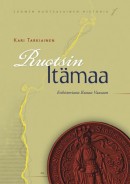 Ruotsin Itämaa. Esihistoriasta Kustaa Vaasaan
Ruotsin Itämaa. Esihistoriasta Kustaa Vaasaan
[Sweden’s Eastland. From prehistoric times to Gustav Vasa].
[Finlands svenska historia del 1: Sveriges Österland. Från forntiden till Gustav Vasa, 2008; Finland’s Swedish history vol. 1, translated into Finnish by the author]
Helsingfors: Svenska litteratursällskapet i Finland, 2010. 331 p., ill.
ISBN 978-951-583-212-2
€39.90, hardback
The historian and archivist Kari Tarkiainen is starting a four-volume series with the general title ‘Finland’s Swedish history’: it forms part of a project funded by Finland’s Swedish-language cultural organisations. This book examines Finland’s prehistoric, medieval and early modern periods, with special emphasis on the two-way relations between Swedes and Finns, and their mutual influence. Initially Finland’s annexation by Sweden from the 12th to the 14th century as ‘Österland’ (Eastland) was a process that involved many stages and also some belligerence, as the Republic of Novgorod in the east also laid claim to the region. Settlements of Swedish-speakers were established on the Åland islands and the coasts; the Swedish Catholic Church (replaced during the Reformation by the Lutheran Church) and the Swedish-language administrative and social system extended their influence on the country, even though Finnish remained the principal language of Finns. Finland remained part of Sweden until the early 19th century. Ruotsin Itämaa is a fascinating book, which draws on archeology, linguistics and onomastics, and is beautifully illustrated.
Translated by David McDuff
Linnoista lähiöihin. Rakennetut kulttuuriympäristöt Suomessa [From castles to suburbs. Built cultural environments in Finland]
26 August 2010 | Mini reviews, Reviews
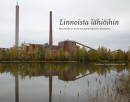 Linnoista lähiöihin. Rakennetut kulttuuriympäristöt Suomessa
Linnoista lähiöihin. Rakennetut kulttuuriympäristöt Suomessa
[From castles to suburbs. Built cultural environments in Finland]
Toim. [Ed. by] Pinja Metsäranta
Helsinki: Finnish Literature Society, 2010. 239 p., ill.
ISBN 978-952-616-206-8
€ 42, hardback
The 2009 inventory of the Finnish National Board of Antiquities includes about 1,300 nationally important built cultural environments, about a tenth of which are represented in this volume. The book introduces the reader to churches, mansions and military barracks, as well as to idyllic countryside and areas formed by industrial agglomerations. Reflected in the inventory is the diversity of the built landscape: the timber prefab districts and concrete housing estates, the reindeer fences of Lapland and the lighthouses of the archipelagos. On display are architectural masterpieces as well as everyday environments: hospitals, schools and prisons. Rural depopulation and urban sameness have changed the landscape in recent decades, but the book shows that much of value still remains. The book contains a list of all the inventory items, also available on the Board’s website (in Finnish and Swedish).
Nordic prize
11 December 2009 | In the news
The Finnish nominees for the Nordic Council’s Literary Prize, to be awarded in March 2010, are the novels Puhdistus (‘Purge’, the winner of the Finlandia Prize for Fiction in 2008) by Sofi Oksanen, and Glitterscenen (‘The Glitter Scene’, 2009) by Monika Fagerholm.
The prize, worth €47,000, will be selected by a jury from a shortlist of 11 works from the Nordic countries. The most recent Finnish winner of the prize was Kari Hotakainen’s Juoksuhaudantie (‘Trench Road’, which also won the Finlandia Prize for Fiction) in 2004.
Lassi Saressalo: Pois Suomesta [Out of Finland]
12 July 2010 | Mini reviews, Reviews
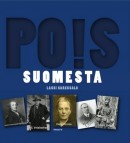 Pois Suomesta – Suomesta paenneita, karkotettuja, väkisin vietyjä, laittomasti lähteneitä
Pois Suomesta – Suomesta paenneita, karkotettuja, väkisin vietyjä, laittomasti lähteneitä
[Out of Finland – refugees, deportees, abductees, illegal emigrants]
Tampere, Traff Kustannus, 2010. 297 p.
ISBN 978-952-99079-7-7
€ 29, hardback
Dr Lassi Saressalo, head of the Finnish Local Heritage Federation, has gathered a large collection of stories about people who were deported or abducted from Finland, or who fled as refugees. The examples relate to several periods of Finland’s history, including Swedish and Russian rule and the period since independence in 1918. People have had to leave Finland at different times for different reasons: some fled the cruelty of conquerors or conscription, others were forced to leave because of their political views or patriotic aims, either on their own initiative or by the government. The most recent cases discussed in the book date from the period following the end of the Second World War. The book is accompanied by a (Finnish-language) website, which provides additional background information on the events that are described as well as a forum for discussion.
Jukka Rislakki: Paha sektori. Atomipommi, kylmä sota ja Suomi [The sector of evil. The atomic bomb, the Cold War and Finland]
29 April 2011 | Mini reviews, Reviews
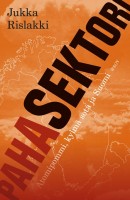 Paha sektori. Atomipommi, kylmä sota ja Suomi
Paha sektori. Atomipommi, kylmä sota ja Suomi
[The sector of evil. The atomic bomb, the Cold War and Finland]
Helsinki: WSOY, 2010. 532 p., ill.
ISBN 978-951-0-36478-9
€ 39, hardback
This book explores the effects of the Cold War and nuclear weapons in Finland and northern Europe in the 1950s and 60s. The Finnish and US armies cooperated closely, without the consent – or even the knowledge – of the Finnish government and parliament. The Finns obtained intelligence on the Soviet Union for the Americans. The Finnish authorities provided around 100,000 aerial photographs of Finland to the US Air Force, and American planes used Finnish airspace to carry out surveillance of the USSR. The United States provided support to Finland by promoting trade between the two countries. When the Soviets carried out nuclear testing on the island territory of Novaya Zemlya, just 800 kilometres from Finland, in 1961, the CIA recommended the US launch a surprise nuclear attack on Novaya Zemlya as a show of force. That was never carried out, but radioactive fallout from the nuclear tests did spread over Finland – however, the Finnish authorities did not want to frighten people ‘unnecessarily’ by mentioning this. Rislakki’s book is based on previously secret archive materials, literature on the subject and interviews. It includes rare surveillance photographs and maps of possible bombing targets in Finland.
Translated by Ruth Urbom
A light shining
28 July 2011 | Essays, Non-fiction
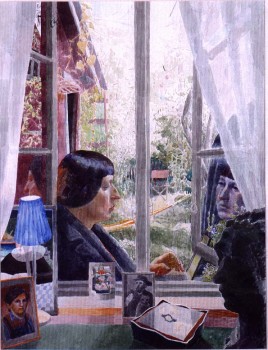
Portrait of the author: Leena Krohn, watercolour by Marjatta Hanhijoki (1998, WSOY)
In many of Leena Krohn’s books metamorphosis and paradox are central. In this article she takes a look at her own history of reading and writing, which to her are ‘the most human of metamorphoses’. Her first book, Vihreä vallankumous (‘The green revolution’, 1970), was for children; what, if anything, makes writing for children different from writing for adults?
Extracts from an essay published in Luovuuden lähteillä. Lasten- ja nuortenkirjailijat kertovat (‘At the sources of creativity. Writings by authors of books for children and young people’, edited by Päivi Heikkilä-Halttunen; The Finnish Institute for Children’s Literature & BTJ Kustannus, 2010)
What is writing? What is reading? I can still remember clearly the moment when, at the age of five, I saw signs become meanings. I had just woken up and taken down a book my mother had left on top of the chest of drawers, having read to us from it the previous day. It was Pilvihepo (‘The cloud-horse’) by Edith Unnerstad. I opened the book and as my eyes travelled along the lines, I understood what I saw. It was a second awakening, a moment of sudden realisation. I count that morning as one of the most significant of my life.
Learning to read lights up books. The dumb begin to speak. The dead come to life. The black letters look the same as they did before, and yet the change is thrilling. Reading and writing are among the most human of metamorphoses. More…
Jorma Ollila – Harri Saukkomaa: Mahdoton menestys. Kasvun paikkana Nokia [Impossible success. Nokia as a growth point]
27 March 2014 | Mini reviews, Reviews
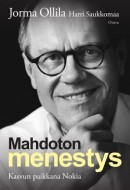 Mahdoton menestys. Kasvun paikkana Nokia
Mahdoton menestys. Kasvun paikkana Nokia
[Impossible success. Nokia as a growth point]
Helsinki: Otava Publishing Company , 2013. 480 pp., ill .
ISBN 978-951-1-18117-0
€39.60, hardback
One of the most fascinating stories in Finland’s recent history is the rapid rise of Nokia, thanks to the establishment of its mobile phones as a global brand in the 1990s, the decline in the company’s success in the 2000s, and its eventual abandonment of mobile phones. The boom was personified by the company’s talented CEO Jorma Ollila. His interesting memoirs are readily accessible to a non-specialist readership. When Ollila began work at the Nokia conglomerate in 1985 he had already shown an aptitude for business. He served first as the company’s director of finance, then as leader of the mobile phone unit, became managing director, and finally CEO from 1999 until 2006. Ollila decided to weed out the operations that were in difficulty and to focus on mobile phones and networks. With the support of a good management team, Ollila proved to be an energetic leader who knew how to share responsibility and also inspire and create trust. In his memoirs he analyses both the company’s successes and its mistakes and losses in the period up to 2010. Ollila stepped down from the post of chairman in 2012.
Translated by David McDuff
Konstnärsbröderna von Wrights dagböcker 1–7 [The diaries of the von Wright brothers, Vols. 1–7]
1 April 2010 | Mini reviews, Reviews
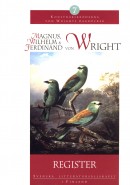 Konstnärsbröderna von Wrights dagböcker 1–7
Konstnärsbröderna von Wrights dagböcker 1–7
[The diaries of the von Wright brothers, Vols. 1–7]
Magnus von Wright: Dagbok [Diary] 1824–1834. 407 p., ill. ISBN 951-583-026-5
Magnus von Wright: Dagbok [Diary] 1835–1840. 470 p., ill. ISBN 951-583-040-0
Magnus von Wright: Dagbok [Diary] 1841–1849. 431 p., ill. ISBN 951-583-047-8
Magnus von Wright: Dagbok [Diary] 1850–1862. 496 p., ill. ISBN 951-583-060-5
Magnus von Wright: Dagbok [Diary] 1863–1868. 493 p., ill. ISBN 951-583-085-0
€ 46 each, hardback
Wilhelm & Ferdinand von Wright: Dagböcker [Diaries] 615 p., ill. ISBN 978-951-583-137-8.
€ 46, hardback
Index: 398 p., ill. ISBN 978-951-583-138-5. € 20, hardback
Helsinki: Svenska Litteratursällskapet i Finland, 1996–2010
Toimittaneet [Ed. by]: Anto Leikola, Juhani Lokki, Torsten Stjernberg, Johan Ulfvens
The three von Wright brothers, who came from a family with nine children in rural north Savo (in eastern Finland), shared a talent for meticulous observation combined with masterful technique and a romantic style. Each of these artists, who were active during the Biedermeier era, was a trailblazer in his own field: Magnus (1805–1868) as a proponent of Finnish national art, Wilhelm (1810–1887) as a wildlife illustrator, and Ferdinand (1822–1906) as a painter of landscapes and birds. Their contribution to Nordic ornithology is considerable. The index volume to the von Wright brothers’ diaries (which were written in Swedish) includes lists of their artworks and details of works held by collections abroad. This series is of significant cultural importance, and it is remarkable for its scientific accuracy. Five volumes consist of Magnus von Wright’s diary entries, which he wrote daily from 1820 up until his death. The sixth volume contains diary entries by the two younger brothers, which provide insights into the everyday life and society of that era, as well as the artists’ working practices and their relationship with nature.
Nature’s own
22 April 2010 | Extracts, Non-fiction
As night falls, the silence is broken by pattering of small feet on the greying windowsill of an old, abandoned house: entire families may live under the rotten floorboards. Houses now inhabited not by humans but by wild animals are observed by Kai Fagerström and Heikki Willamo
Extracts from Viimeiset vieraat. Elämää autiotaloissa [The last visitors. Life in abandoned houses, Maahenki, 2010] by Kai Fagerström, Risto Rasa & Heikki Willamo. Text by Willamo, poems by Rasa, photographs by Fagerström and Willamo
Some thirty years later I found the badgers’ cottage again – it wasn’t the same one, but the mood of my childhood still floated there. Grey walls and a shingle roof, bare gaping windows, the door creaking on its single hinge. Oak tree in the yard, lilacs flourishing wild. The forest was rapidly reclaiming its own behind the cottage. The mounds of sand beside the wall bases showed prints of strong-clawed paws and a number of paths, hardened from use, led into the woods. More…
The guest event
12 November 2010 | Fiction, Prose
A short story from Vattnen (‘Waters’, Söderströms, 2010)
It was a lagoon. The water was not like out at sea, not a turquoise dream with white vacation trimming on the crests of the waves. This water was completely still and strange, brown yet clear, sepia and umber, perhaps cinnamon, possibly cigar with the finest flakes of finest wrapper. Clean. This water of meetings was clear and clean in a non-platonic, remarkably earthbound way.
Sediment and humus, humus floating about in the morning sun.
It felt comforting, as if the water didn’t repel the foreign bodies as a matter of course, didn’t immediately suppress the other particles and sanctimoniously hasten to force anything that wasn’t water, anything that could be interpreted as pollution and encroachment, down to the bottom and let it dissolve and die all by itself. This water sang its earth-brown song of unity without thereby becoming any less water than water-water was.
Helena felt cold. More…
Jera Hänninen & Jyri Hänninen: Tuhansien aatteiden maa. Ääriajattelua nyky-Suomessa [Land of a thousand ideologies. Extremist thought in contemporary Finland]
11 March 2011 | Mini reviews, Reviews
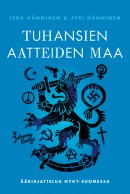 Tuhansien aatteiden maa. Ääriajattelua Nyky-Suomessa
Tuhansien aatteiden maa. Ääriajattelua Nyky-Suomessa
[Land of a thousand ideologies. Extremist thought in contemporary Finland]
Helsinki: Johnny Kniga Kustannus, 2010. 267 p.
ISBN 978-951-0-36072-9
€ 30, paperback
There are a number of extremist ideologies with a foothold in Finland. Even though most such groups are very small, religious and political extremism have experienced growth and do not always remain on the margins. The authors of this book have chosen to include only those ideologies whose efforts are clearly directed against particular groups or that would result in an erosion of democracy if they were to gain some real power. Topics receiving the greatest amount of attention in the media have been immigration and the polarisation within the Finnish Lutheran Church. According to some reports, the Church is being split over the issues of female clergy and homosexuality. This book also covers Finnish-born Islamists who support Sharia law, Communists who distort history and venerate the Soviet Union, honour killings carried out in Finland, and NRA Finland, a hard-line pro-gun lobbying organisation. The authors also discuss how these zealots, having gained more support, have also begun to influence the positions of mainstream political parties.
Translated by Ruth Urbom
Aquatic escapades
12 November 2010 | Reviews

Susanne Ringell. Photo: Anders Larsson
First about the form: the wavy, turquoise cover of Vattnen (‘Waters’), Susanne Ringell’s third collection of short stories, is protected by a layer of waxed paper that looks like a thin film of ice.
Inside the book, water flows everywhere: the twelve stories are set in it or near it, or mimic it in form. The water symbolises a fundamental force, a consolation, but also an elusivity. The characters in the stories exist in a kind of volatile, intermediate state – they are heading for a crisis or are in the moment immediately after one.
Since 1993 Ringell (born 1955) has produced short story collections, poetry, prose poetry, mini-stories and a novel. In them, as in Vattnen (Söderströms, 2010), Ringell’s language is her own: beautiful, robust and fragile, vivid, subtle and at the same time practical. More…

